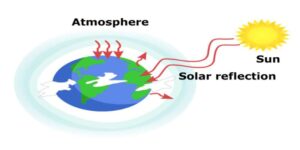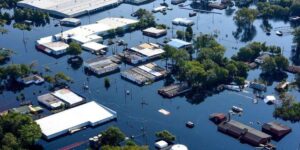A Scorching Reality
Remember the summer of 2023? Europe was hit with record-breaking heatwaves, leading to thousands of heat-related deaths. It felt like the world was on fire, and sadly, it’s a stark reminder of the very real impacts of climate change. I remember feeling helpless and scared, wondering what kind of future we were leaving for our children. But then I realized, burying my head in the sand wasn’t an option. We need to understand the science and take action.
Understanding the Greenhouse Effect
Think of the Earth as a giant greenhouse. Sunlight enters the Earth’s atmosphere, warming the planet’s surface. Some of this heat is then radiated back into space. However, greenhouse gases, such as carbon dioxide and methane, act like a blanket, trapping this heat and preventing it from escaping. This trapped heat causes the Earth’s temperature to rise, leading to global warming.

The Devastating Impacts of Climate Change
The consequences of climate change are far-reaching and affect every corner of our planet. Here are some of the most significant impacts:
- Rising Sea Levels: As global temperatures rise, glaciers and ice sheets melt, causing sea levels to rise. Coastal cities like Miami and Shanghai are at risk of flooding and erosion. Small island nations are particularly vulnerable, facing the threat of disappearing entirely.

- Extreme Weather Events: Climate change is intensifying extreme weather events, such as hurricanes, droughts, and floods. These events can cause widespread damage, loss of life, and economic disruption.

- Biodiversity Loss: Rising temperatures and changing weather patterns are disrupting ecosystems and leading to the loss of biodiversity. Coral bleaching, ocean acidification, and habitat loss are threatening marine ecosystems. Changes in temperature and precipitation patterns are affecting terrestrial ecosystems, leading to declines in plant and animal populations.

- Health Impacts: Climate change can exacerbate health problems, such as heat-related illnesses, respiratory diseases, and the spread of infectious diseases. Extreme heatwaves can lead to heat-related illnesses and deaths, while air pollution can worsen respiratory problems.
While the challenges posed by climate change are significant, we’re not powerless. There are steps we can take to mitigate its effects and create a more sustainable future. Here’s how you can make a difference:
Reduce Your Carbon Footprint:
- Reduce energy consumption by using energy-efficient appliances and turning off lights when not in use.
- Minimize your use of fossil fuels by walking, biking, or using public transportation.
- Reduce, reuse, and recycle to minimize waste
Support Renewable Energy:
- Support policies that promote renewable energy sources like solar, wind, and hydro power. Consider installing solar panels on your home or investing in renewable energy companies.
Eat Sustainable:
- Choose plant-based diets and reduce meat consumption. Support local farmers and reduce food miles by choosing seasonal produce.
Educate Others:
- Spread awareness about climate change and inspire others to take action. Talk to your friends and family, share information on social media, and support educational
Vote for Climate-Conscious Leaders:
- Support politicians who prioritize climate action and advocate for policies that promote sustainability.
Get Involved in Local Initiatives:
- Participate in community-based efforts to address climate change, such as tree planting events, community gardens, or local advocacy groups.
By understanding the science behind climate change and taking action to reduce our carbon footprint, we can create a healthier planet for ourselves and future generations. Let’s work together to protect our home.

PHYSICALLY STRONG … MENTALLY AWAKE … ENVIRONMENTALLY SAFE
What are some of the key health impacts of climate change across different regions of the United States?
Climate change is exacerbating various health issues across the U.S., and the specific impacts vary by region. In Alaska, there are concerns about increased risk of foodborne illnesses, injuries due to changing ice conditions, and mental health challenges. Hawaii and the U.S.-affiliated Pacific Islands are dealing with threats like sea-level rise, water quality issues, and increased incidence of mosquito-borne diseases such as dengue fever and Zika. The Midwest faces health risks from extreme heat, air pollution, and water contamination, whereas the Northeast is experiencing increased cases of Lyme disease, respiratory illnesses from allergens, and mental health impacts from severe weather. The Northern Great Plains are grappling with wildfires, drought, and heat-related illnesses. The Northwest faces challenges from wildfires, respiratory problems, and reduced access to clean water. The Southeast is particularly vulnerable to flooding, heatstroke, and vector-borne diseases. The Southern Great Plains are seeing health impacts from severe droughts, dust storms and extreme heat. Finally, the Southwest suffers from extreme heat, wildfires, water scarcity, and respiratory problems due to increased air pollution, and the U.S. Caribbean faces sea level rise, impacts to infrastructure, and increases in vector borne illness.
How concerned are Americans about global warming, and has that changed over time?
There’s a significant level of concern among Americans about global warming, although the degree varies. Survey data suggests that a substantial portion of the population believes global warming is happening and are concerned about its impacts. While there have been fluctuations in the level of concern over the years, a notable portion of Americans consistently express worry about the effects of climate change. For example, while those reporting feeling very worried about global warming has fluctuated between 12% and 16%, as of April 2024, 38% report not being worried at all. This suggests a relatively entrenched degree of concern, but the level of worry depends on how global warming effects people personally and within their community.
How much do Americans believe global warming will harm vulnerable populations like the world’s poor?
A considerable portion of Americans think that global warming will significantly harm the world’s poor. In March of 2015, 30% of Americans believed global warming would harm the poor a great deal. By 2018, that number had increased to 40%, suggesting a growing awareness of the disproportionate impact of climate change on vulnerable populations. This shows that there is an understanding of the social justice aspect of climate change, with many perceiving its most severe consequences falling upon those least equipped to deal with it.
Have Americans considered moving to avoid the impacts of global warming?
While the provided survey data doesn’t directly give percentage of how many Americans have considered moving, it does ask whether individuals have ever considered moving to avoid impacts of global warming such as sea-level rise, flooding, heat waves, or wildfires. The data on this question suggests that a significant number of Americans have considered moving, at 12% as of April 2024. This number demonstrates the very real and personal impact climate change is having on the populations and the growing recognition that climate change impacts might require drastic changes in one’s personal life to mitigate.
What are the emotional responses of Americans when thinking about global warming?
When thinking about global warming, many Americans experience a range of negative emotions. As of the December 2022 surveys, 17% of respondents reported feeling very depressed, 31% reported feeling moderately depressed, 1% reported feeling depressed nearly every day, 1% reported feeling depressed more than half of the days. While these numbers represent emotional responses that do not fit neatly into categories of depression, they do still demonstrate the emotional and mental impact climate change is having on people. Additionally, there is evidence that some experience feelings of worry and even helplessness as they contemplate the future effects of climate change. This speaks to the pervasive and psychologically challenging nature of the issue.
How much effort are Americans willing to make to reduce global warming, and what are their motivations for taking action?
A large amount of Americans believe that they should be making a moderate amount of effort to reduce global warming (28% of respondents in April 2024) . In general, people report feeling motivated to act by concerns about a variety of things including their own health, saving plant and animal species, protecting God’s creation, preventing the destruction of most life on the planet, and improving the health of other people. This shows a mix of self-interest, altruism, and moral beliefs driving people’s willingness to take action. These reasons demonstrate the multifaceted nature of climate action, appealing to different values and worldviews.
How do Americans perceive the impact of global warming on different extreme weather events in the United States?
Americans believe that global warming has a large impact on various extreme weather events in the U.S.. In April 2024, 42% of respondents believed that global warming is having “a lot” of an effect on extreme heat, 33% believed it was having “a lot” of an effect on flooding, and 43% believed that it was having “a lot” of an effect on wildfires. However, it is important to note that public perception does vary quite a bit depending on the weather event. For example, in that same survey, only 29% believed that global warming has “a lot” of an effect on water shortages and 28% believe that it has “a lot” of an effect on tornados. In general, there’s an understanding that global warming is playing a role in the frequency and intensity of these events, although the degree of perceived impact differs based on the specific event.
Do Americans view global warming as a purely environmental issue, or do they see it as a broader problem with other dimensions?
Americans do not perceive global warming as just an environmental issue. Many also consider it to be a moral, religious, scientific, health, economic, national security, poverty, severe weather, and humanitarian issue. For example, 77% see it as an environmental issue, 59% as a health issue, 60% as an economic issue, 58% as a religious issue, 68% as a scientific issue, 65% as a severe weather issue, and 33% as a poverty issue. This data shows that there is a growing understanding that climate change has ramifications that go beyond just the environment, demonstrating the complexity and far-reaching impacts of climate change.




